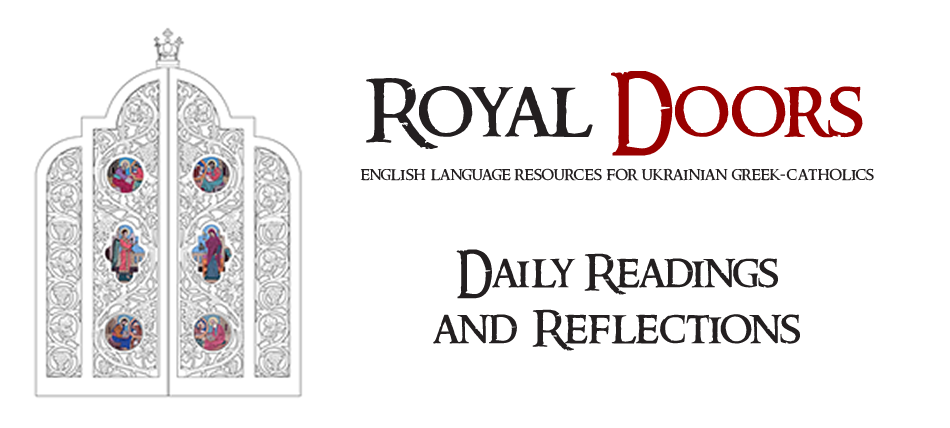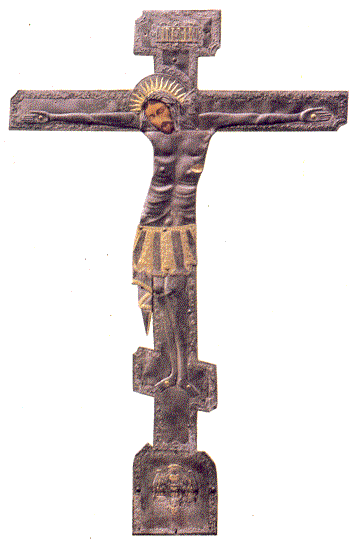by Brent Kostyniuk
“You’re not really Catholic. You belong to that Ukrainian church.”
How often have we, as Ukrainian Catholics, had to explain to others that, yes, we are Ukrainian and Catholic?
A young mother arrived at a Catholic school in Edmonton to register her son, bringing along his baptismal certificate from a Ukrainian Catholic parish. Despite this, she was told he could not be enrolled, as he was not Catholic. Ironically, the school is named after a Ukrainian Catholic bishop!
So why the confusion? Did St. John Paul II not say that it is the duty of all Catholics to understand and appreciate their Eastern brothers and sisters? Did he not say the Church needs to breathe with both lungs, East and West? Indeed, the saint spoke of how the Ukrainian Catholic Church adds richness to the life of the entire Church. So, how is it that we are Ukrainian and Catholic, and, it should be noted, Christians who worship according to the Byzantine Tradition?
Some History
To understand the confusion, it is first essential to understand exactly who we are. To find the answer, we first need a bit of history. In 324, Constantine the Great decided to move the capital of the Roman Empire from Rome to the ancient city of Byzantium. Shortly after, on May 11, 330, the city was renamed Constantinople in honour of the Emperor. From that time, the Roman Empire was effectively separated into Eastern and Western sections. Although the Western Roman Empire ceased to exist in 476, when Romulus Augustulus was forced to abdicate, the Eastern Roman Empire, also known as the Byzantine Empire, continued to exist until 1453, when Mehmed the Conqueror conquered Constantinople.
As the Eastern and Western sections of the Roman Empire grew further apart politically, so too did they grow apart in their Christian theology. The Latin approach generally leaned to the practical, while the Greek mindset was more mystical and speculative. Latin thought was strongly influenced by Roman law and [eventual] scholastic theology, while Greeks comprehended theology through philosophy and the context of worship; the East remained closely linked to Patristic teaching. It has been said the West worships with the head, the East worships with the heart.
Division
Although East and West grew apart theologically, they were united in matters of faith. There was, however, one issue of great contention—ecclesiastical authority and whether the Pope in Rome held power over the Patriarchs in the East. Since the fourth century, the Latin Church had argued for the primacy of the Roman Pope and claimed that he held universal authority over the whole church. In the East, the Pope was honoured, however, he was not seen as holding power to determine policy for other jurisdictions, nor to alter the decisions of Ecumenical Councils.
The long-standing dispute came to a head in 1054, when Pope Leo IX and the Patriarch of Constantinople, Michael Cerularius, mutually excommunicated each other. In that year, Pope Leo sent his chief advisor Cardinal Humbert to Constantinople with instructions to deal with the problem. Humbert aggressively criticized and condemned the actions of Cerularius. When Cerularius ignored the Pope’s demands, he was formally excommunicated as Patriarch of Constantinople on July 16, 1054. In response, Cerularius burned the papal bull of excommunication and declared the Bishop of Rome to be a heretic. East and West were divided. The event has been described as, “the magnificent clash of two opinionated men.”
Attempts at Unity
Although the division between Constantinople and Rome deepened over the years, the Kyivan hierarchy tried to work to restore Christian unity. Representatives participated in the Western Councils of Lyon (1245) and Constance (1418). Isidore, the Metropolitan of Kyiv, was himself one of the creators of the Union of Florence (1439).
Then, in the late 1500s, a group of Ukrainian bishops petitioned Polish King Sigismund III to have the Pope of Rome as their head, rather than the Patriarch of Constantinople. Conditional to this request was the retention of the existing Orthodox Rite and the inner organization of the Ukrainian Church. In 1595, Bishops Poti and Terletsky travelled to Rome, where Pope Clement VIII accepted their declaration. That same year a council was held in Brest’-Litovsk to deal with the reunification.
A Saint for Unity
However, unity did not come without cost. Bitter divisions developed between the faithful who accepted the Pope and those who did not. On November 12, 1617, Father Josaphat Kuncevyc, a great defender of the reunion of 1595, was consecrated Bishop of Vitebsk, with right of succession to the Archbishopric of Polotsk. He became archbishop in 1618. While each succeeding year saw fresh evidence of his fruitful labours, it also witnessed the steady growth of the hatred of those claiming allegiance to Rome. Finally, on November 12, 1623, an axe-stroke and a bullet brought Josaphat his martyr’s crown. Josaphat was struck with a halberd, then shot, and his body thrown into the river. It was later recovered and is now buried in St. Peter’s Basilica in Rome. He was canonized in 1867, the first saint of the Eastern Church to be canonized by Rome.
Today, we celebrate the feast of St. Josaphat on November 12. The kontakion of the day recounts his heroic efforts to bring unity to the Church:
Enlightened in childhood
by the flame from the crucified Christ,
you resembled the angels in your life as a monk,
and as bishop you lived in godliness.
You clearly preached unity and with your martyr’s blood,
you calmed hearts inflamed by love for dispute.
From Christ you received the crown.
And so remember us as we cry to you:
Rejoice, O unshakeable pillar of unity.
In over four centuries of existence, the Ukrainian Catholic Church has been a model for Christian unity. In that time, other Eastern churches have followed her lead and gained reunion with Rome. Yes, we are Ukrainian, and yes we are Catholic. Ours is a unique Tradition, holding loyalty to the authority of Rome, yet filled with the richness of Byzantine theology and the traditions of our Ukrainian ancestors.

